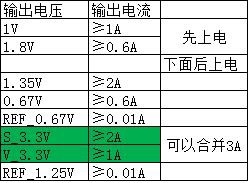Other Parts Discussed in Thread: TPS65023, TPS65916, TPS65917-Q1, TPS6521815, TPS650250
Hi,
my customer is using DA9062 to power xc7z007s from Xilinx.
I searched on our website and find TPS650864 suitable for artix7 Xilinx.
But I have several questions:
1. DA9062 can support 5V single input rail, but it seems that TPS650864 need a higher power rail, right? Do we have 5V input rail device?
2. If we still want to use TPS650864, do we need to program the OTP ourselves to make it compatible for the voltage level and power sequencing for xc7z007s or it's done in TI factory? If it's done by us, how to do it? Can we provide the file to be loaded to OTP and the software& hardware tool to do it? Customer says that DA9062 doesn't need their program to write registers and all are done before the device is shipped to them.


